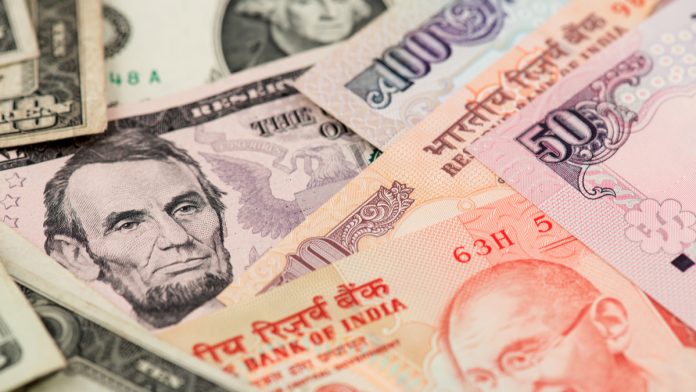- Indian Rupee (INR) falls, extending last week’s losses
- Domestic equities drop & gold rises
- US Dollar (USD) rises as attention turns to the Fed
- A 25 basis point hike is expected this week
The US Dollar Indian Rupee (USD/INR) exchange rate is rising at the start of the week, extending gains from the previous week. The pair rose 0.68% last week, settling on Friday at 82.52. At 10:00 UTC, USD/INR trades +0.17% at 82.66 and trades in a range of 82.45 to 82.72.
The Indian rupee is falling, tracking domestic equities lower as banking concerns continue to weigh on risk sentiment. Fears of contagion risks in the global banking system are seeing investors ditch riskier assets in favor of safe havens such as gold. The precious metal has pushed over $2000 per ounce.
Meanwhile, the nifty 50 has fallen 1.1% in early trade after falling over 2% last week, its largest drop in nearly a month. The Sensex has fallen 1.1% in early trade. The financial sector and information technology are the hardest hit.
News that UBS has bought Credit Suisse Unfair central banks are intervening with dollar liquidity measures to enhance global access has done little to stem fears of a broader financial crisis.
Separately oil prices continued to fall after tumbling 10% last week. West Texas Intermediate trades down at $65 per barrel on fears that problems in the banking sector could fuel a recession which would hurt oil demand.
The US Dollar is rising across the board. The US Dollar Index, which measures the greenback versus a basket of major currencies, trades +0.04% at the time of writing at 103.89 after falling 0.83% last week.
The US dollar is rising in risk of trade and as investors look ahead to the Federal Reserve interest rate announcement on Wednesday. Little over a week ago, the markets were pricing in a 50 basis point rate hike by US central bank.
However, given the cracks appearing in the financial system, the market is now pricing in a 60% probability of a 25 basis point rate hike and a 40% likelihood of The Fed keeping monetary policy unchanged while it assesses the stresses in the financial sector.





